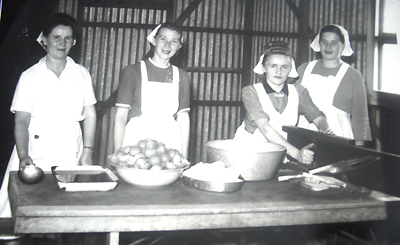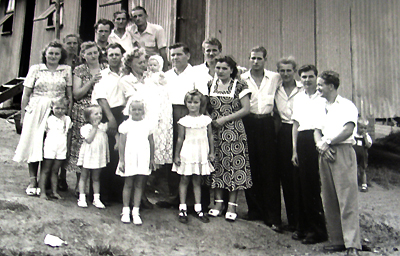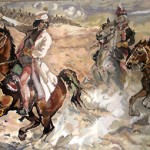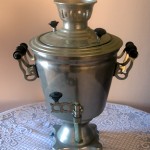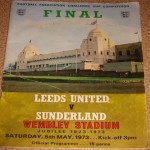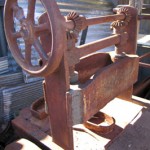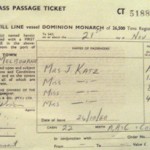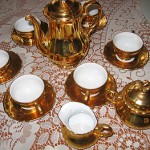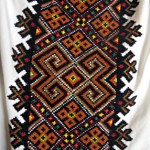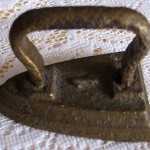Polish
Szastarka, Poland
Germany in late November 1950
Sydney on 30 December 1950
Bathurst for 2 weeks, Parkes for 5 months and Greta for 12 months
I bought a house in Lambton (Newcastle) with a friend of mine who I met at Greta camp.
Kitchen hand at Greta migrant accommodation, Hunter region, NSW
Lampworks at Hamilton, Newcastle
My name is Stella Lakomy and my maiden name was Stocsiot (Stanislawa) Pietraszek. I was born on 8 March 1927 in a small village in Poland called Szastarka. I was one of five children and my father worked on the railway. He didn’t earn much money, about one dollar a day.
During the [Second World] war, my family had to go to Germany to work. My father would not let me go to Germany with them. He said I was too young to go and too young to stay by myself. I was nine-and-a-half, and he sent me to another village called Polichna to work. I stayed with an old couple and worked for them for five-and-a-half years until I was 15.
When I was fifteen, the Germans made me go to work on this big farm; there was thousands and thousands of acres. I think it was in a place called something like Adolwista. I met up with my family at the farm and we were there until 1945. Accommodation was in old stables and they were set up so that every family had one room each. There were about 30 families.
After the war, we stayed in several Displaced Persons’ (DP) camps. I can’t remember the names of them. I stayed with my family until I got married. I met my husband in a DP camp. His name was Leon Lakomy and he was Polish. We were married in Germany in 1946 and I was 19 years old. Our daughter was born on 3 May 1947.
After the war, my family wanted to go back to Poland but I didn’t want to go back. I knew there was nothing back there for young people. Before the war, we lived in a little house near a train station. But, when my family went back after being in Germany, there was nothing left. Every room was empty and our house was nearly destroyed. My family then went to live on the other side of Poland in a little house. Not a big farm or anything; just with a little garden.
I didn’t know where we were going when they sent us out here to Australia. I didn’t know what Australia was or where Australia was. During the war, I saw men with big hats and some other people said they were Australian soldiers. But nobody knew where they came from.
My husband, our three year old daughter and myself arrived in Australia on 31 December 1950. We brought nothing with us, nothing. We didn’t have anything. We left a port in Germany on the ship Nelly and it took 39 days to get to Sydney. I was in a room with 250 women and kids and I had to clean the floors five times. I wasn’t sick but a lot of people were. Our room was really hot.
When we came off the ship, we went to Bathurst migrant camp [in central-west NSW] on the train. We got to Bathurst at lunchtime and I was really tired and hot. It was really hot! We didn’t have anything to eat except for some dried fruit and water. We drank that and then went to sleep. The people who came before us in 1949 went out dancing because it was New Year’s Eve but we went to sleep. My daughter and I lived in a tent at Bathurst.
After a fortnight, we went to Parkes camp and my husband went to Wollongong [in the Illawarra region] to work with the Water Board. After he finished work in Wollongong, he went to work in Cooma making a dam. He had a two year contract to come out here to work. We knew we would be separated; that the men would go wherever they were sent and the women and children would go to the camps. I was at Parkes for about five-and-a-half months I think. When I was in Parkes my husband would come and visit only once a month. He would lose a day of work [to do this] because from Wollongong to Parkes it took all night and all day.
Then my daughter and I went to Greta [in the Hunter region]. We had one little room at Greta with only one bed for my daughter and myself, and a cupboard for clothes. We had to go to another barrack to use the shower. Men had one [shower] barrack and women another. I can’t remember the number of our barrack; I didn’t take any notice. My husband could only come to Greta sometimes [because of the distance]
While still in Greta I bought a house in Howe Street, Lambton [in nearby Newcastle] with a friend of mine, who I met in the camp. The two of us saved £500 and we bought the house together. We lived there for four years and then they paid me out and I found this house.
In 1959, my husband started work at the BHP. I don’t know what happened at the BHP but he and another fellow both got the sack. I worked at the lampworks near Hamilton for 25 years. I asked them for a job for my husband and he started working there and retired from there. I could have worked longer than 25 years but I had an accident so I retired. I received a small amount of compensation because the accident happened at work.
The rug means a lot to me because my best friend gave it to me. It was hers and she had it for a long time. She came to Australia twice to my place and then sent the rug in the mail. It was made after World War One but the imagery is about something that happened during that time. They are Polish soldiers and the main one is a Polish hero, Koscuszko.
In 1971, when I first went back to Poland, I sent the Russian samovar [hot water jug] back here in the post because it was too heavy to carry. It cost a lot of money to send back. It was another 13 years before I went again. I have since been back four times. I never travelled with my husband, as he would never go anywhere, so I travelled by myself.
When I went back to Poland the second time, I never saw my family any more because they had died except for my youngest sister. My sister is still alive and lives in Newcastle, but I never see her; when my husband died, she never rang up. She is seven-and-a-half years younger than me.
Now that I watch Polish TV, I can see how Poland looks; it is really beautiful. But I knew when I went back to Poland the first time that I couldn’t live there; there was nothing. Nothing in the shops, you couldn’t buy anything. [During the Second World War] the Russians took everything and when the Germans left Poland, they took everything and then the Russians took again. It was much different to how it is now.



